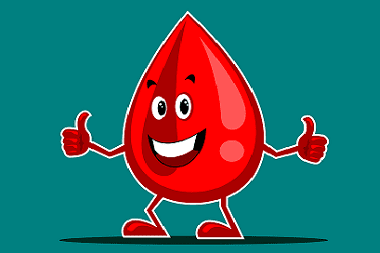Health for a lifetime >>>> Low hemoglobin - how to increase it?
Low hemoglobin - how to increase it?

The level of hemoglobin in the blood is an important indicator of the health of the body, since the protein hemoglobin is a component of red blood cells that transport oxygen to various tissues.
Hemoglobin is an iron-containing protein, which means that such a trace element as iron affects its qualitative and quantitative indicators.
Why does the hemoglobin level decrease?
- The lack of iron-containing foods in the diet helps to reduce the level of hemoglobin.
- Violations in the work of the hematopoietic organs (spleen, bone marrow) lead to a decrease in hemoglobin parameters.
- Loss of blood from trauma or surgery, capillary bleeding or menstrual bleeding causes a drop in hemoglobin levels in the body.
- Disorders of iron absorption in the gastrointestinal tract associated with low acidity or the use of foods containing casein (dairy products).
Signs of low hemoglobin (directly related to oxygen deprivation of tissues):
- Drowsiness and lethargy (the brain suffers),
- Headaches and dizziness (poor oxygen supply to the scalp),
- General weakness,
- Light-headedness or fainting may occur.
Before increasing the level of hemoglobin, it is necessary to establish the true cause of its deficiency and eliminate, if necessary, disorders of the hematopoietic system. External inputs of the trace element iron to raise the level of hemoglobin are also essential. To do this, foods with a high iron content are forcibly introduced into the diet. The most important foods for the body that replenish iron stores include meat (beef, veal, lamb), fish roe, egg yolks, red vegetables and fruits. For better absorption of trace element iron made it to combine with vitamin C. It is for this reason that it is convenient to combine meat dishes with sour fruits and vegetables, and to cook meat with the addition of sour sauces.

Read

Read



























